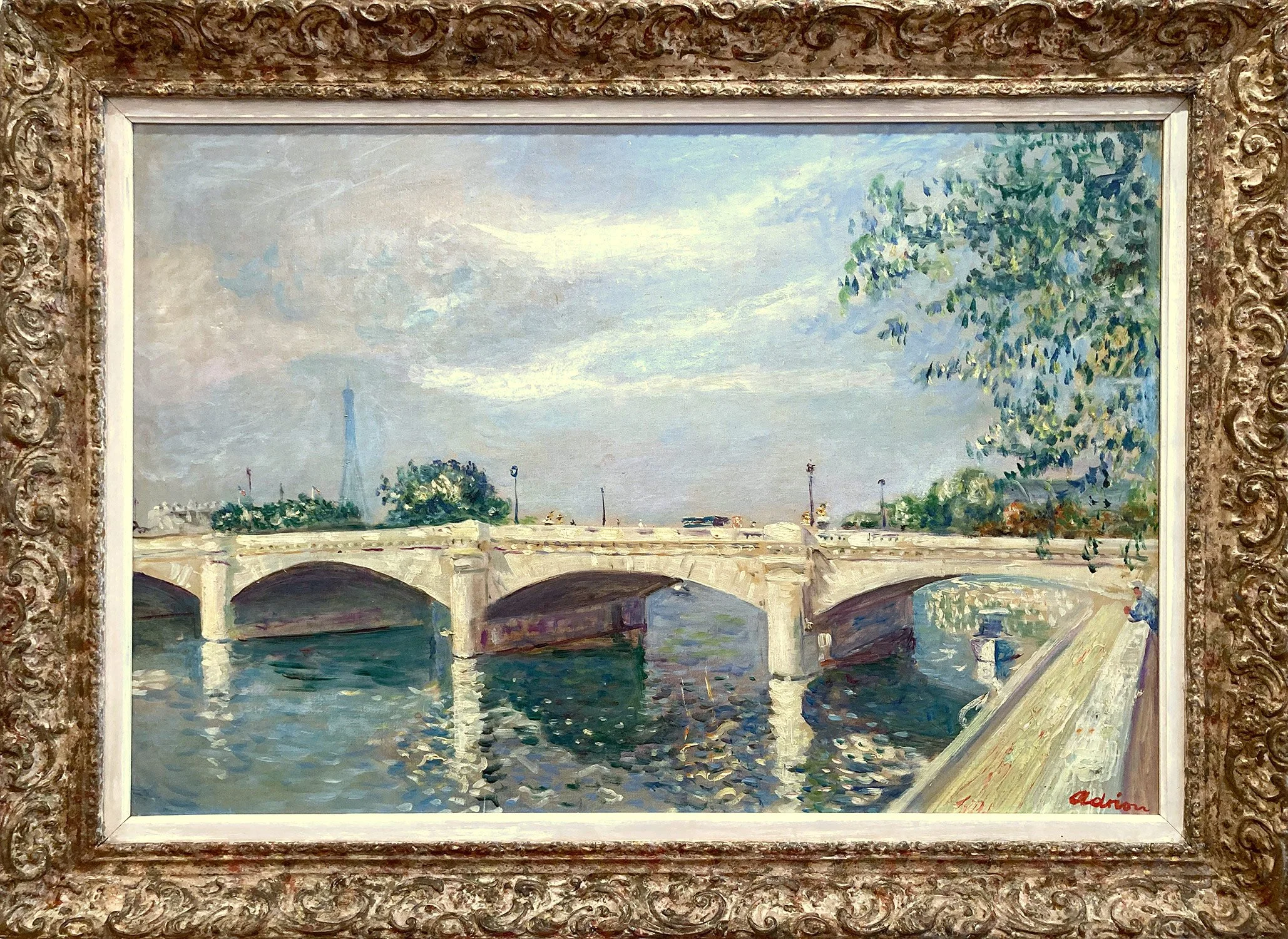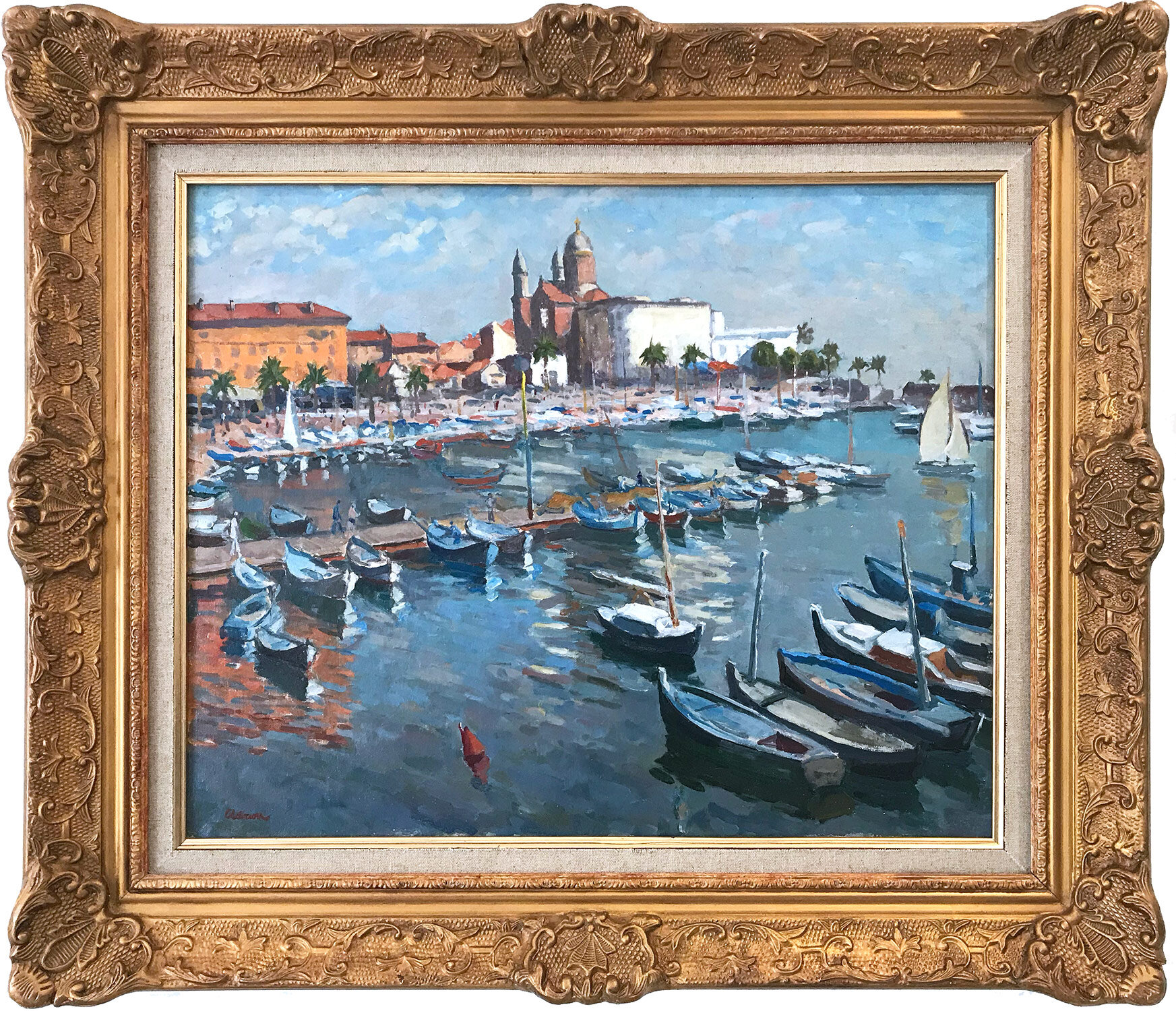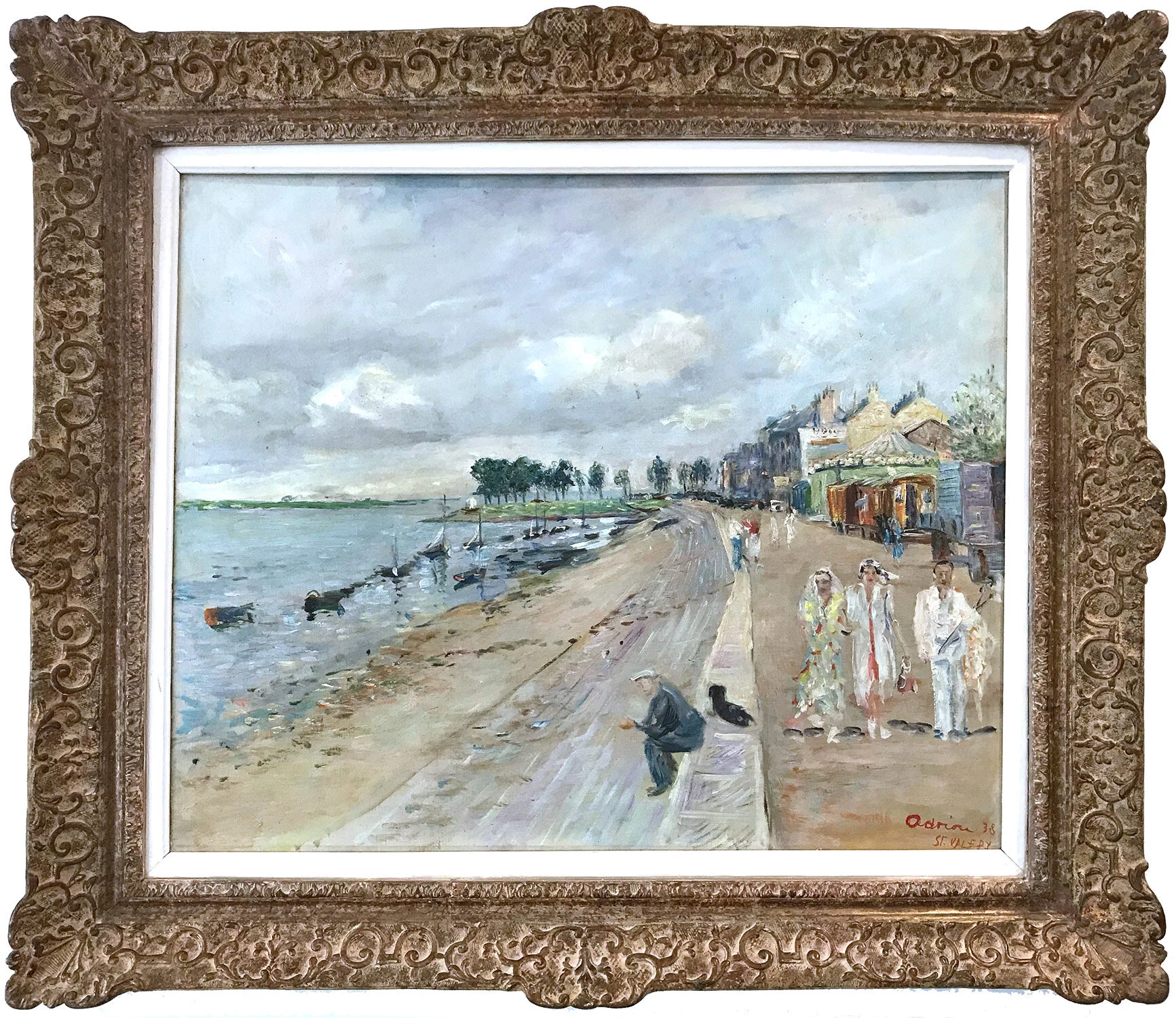Lucien Adrion
Lucien Adrion was born May 25, 1889 in Strasbourg, France. He was was a French Post-Impressionist painter, draftsman, and printmaker known for his depictions of the French countryside and beaches, as well as Parisian life including landscape, still life, figure and landmarks paintings. He began his initial studies in Strasbourg as a technical draughtsman. In 1907, at the age of 18, he left his hometown Strasbourg and traveled to Paris, where he found employment in a large drafting company to work as a fashion illustrator. Adrion changed his mind upon arrival and rather than working for a large company, he decided to peruse his artistic career by traveling to London, Munich and Frankfurt. As the World War broke out he had to go to Berlin, where he studied as an engraver with Hermann Struck, who was also the teacher of Marc Chagall. He remained in Berlin until the war ended and after the demobilization, Lucien would study engraving under Franz Ritter von Struck, who was Marc Chagall's teacher as well. Adrion returned to his home town in France in 1919, and then eventually moved to Paris, where he took a studio in Montparnasse of Paris and allied himself primarily with the young Eastern European painters such as Chaim Soutine, Pinchus Krémègne and Michel Kikoine to operate. In 1921 Adrion had his first solo exhibition at Galerie Chéron and then in 1926 at the age of 37, he had his first major exhibition in the Salon des Indépendants, where later on, he exhibited regularly. In 1940 he exhibited in the Salon d'Automme and the following year 1941 in the Salon des Tuileries where he exhibited several landscapes. As an engraver, watercolorist and painter from the French school, he took a variety of external scenes as subjects for his work, showing a particular fondness for the picturesque aspects of the Parisian landscape, beach scenes and horse races. Throughout his career, Adrion continued to exhibit his work at Salons in Paris, where his paintings were praised for their ability to capture the movement and transience of urban life. He eventually left Paris to settle in Normandy, where he began focusing on beach landscapes subject, with a great success because they became very popular as decorative paintings. He died on August 1953 in Cologne, France.








